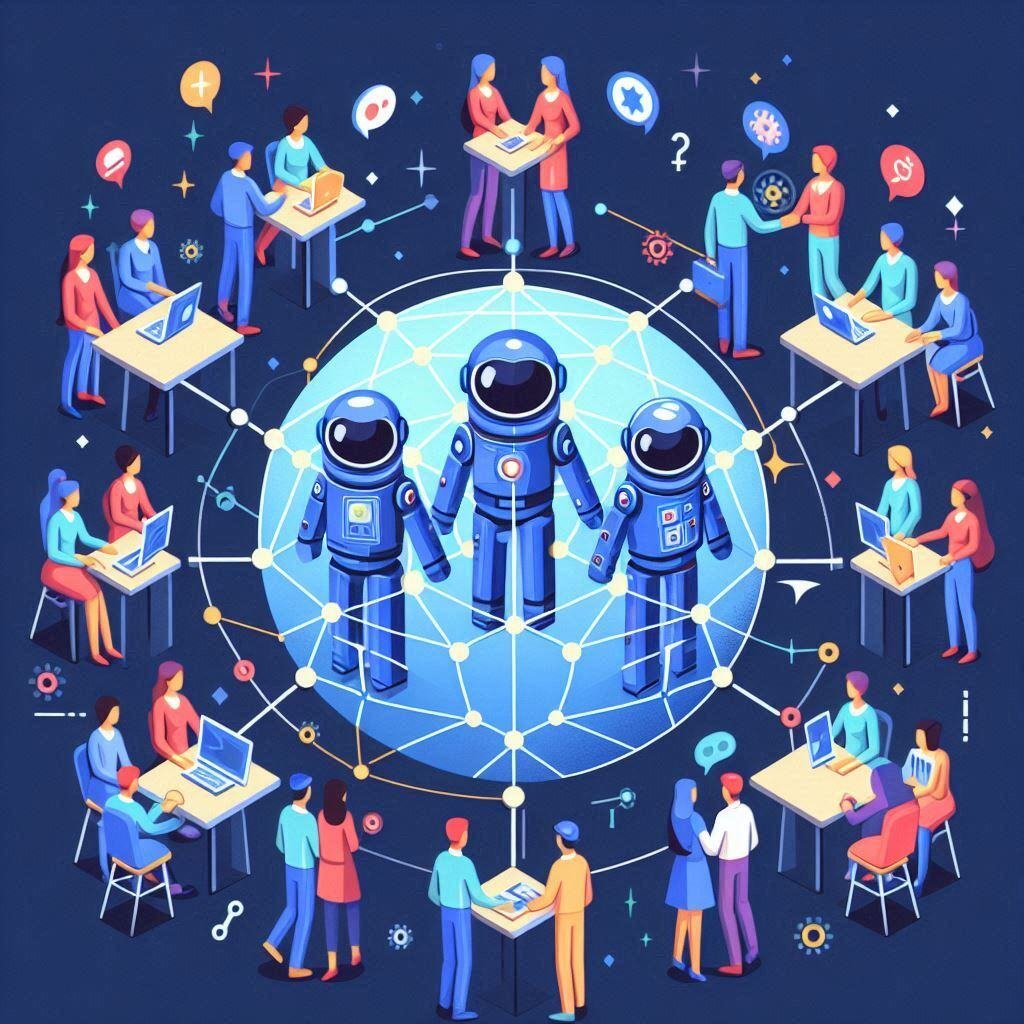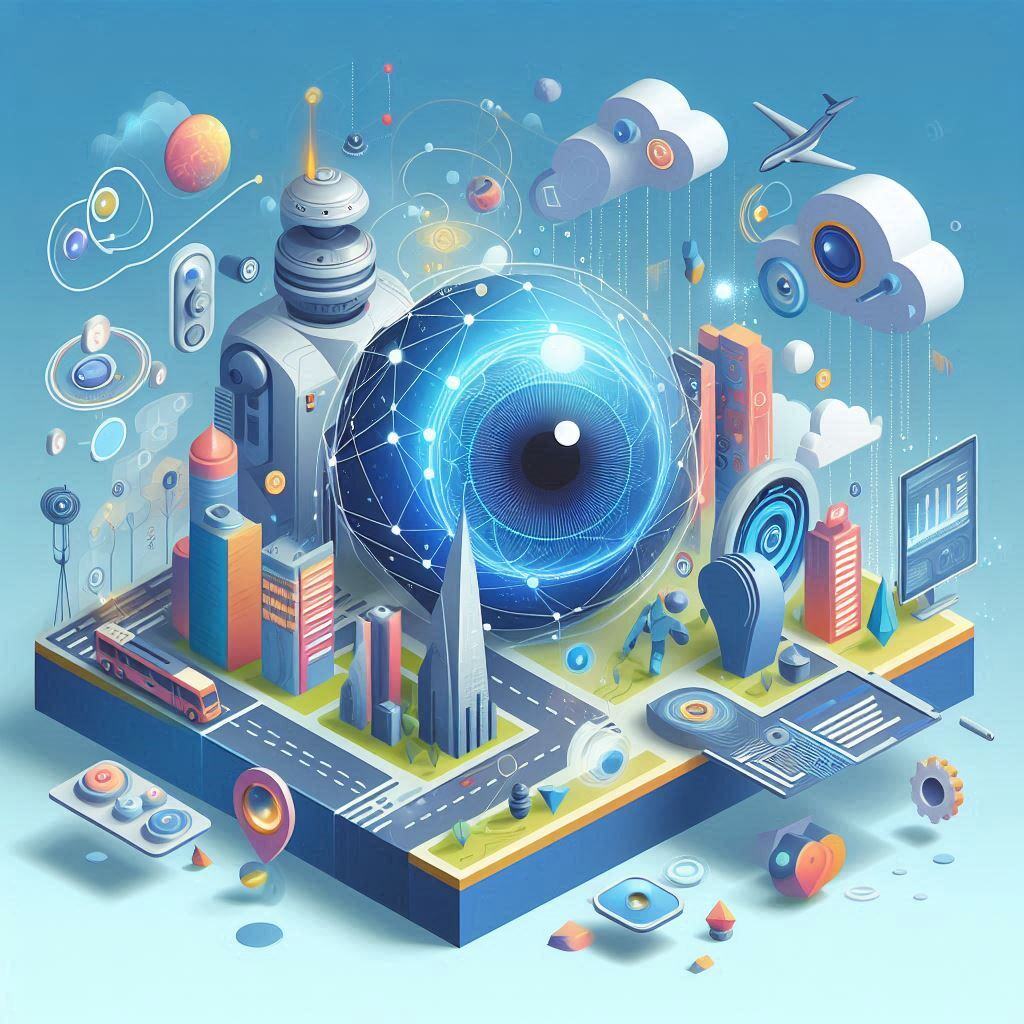3 min read
Multi-Agent Collaboration in Agentic AI
Multi-agent systems (MAS) represent a powerful AI approach where several agents work together to achieve complex tasks. Each agent operates...
In this lesson, we'll focus on how Agentic AI, specifically multi-agent systems, is practically applied in business environments. Rather than simple single-task automation, multi-agent systems operate in dynamic, real-world scenarios where agents collaborate to handle complex workflows, from marketing to customer service. By automating multi-step processes and integrating seamlessly with existing infrastructures, Agentic AI enhances operational efficiency, reduces manual intervention, and ensures more scalable solutions for businesses.
Context: Marketing campaigns involve numerous steps, including content creation, scheduling, analysis, and optimization. Traditional methods often require manual input for each task, making it labor-intensive and difficult to scale.
How Agentic AI Helps: With Agentic AI, you can automate nearly the entire process. One agent creates content based on past successful campaigns, another agent handles the timing of posts across social platforms, and a third agent analyzes campaign performance in real-time, adjusting strategies accordingly. Each agent specializes in one task but collaborates to ensure the campaign runs smoothly and adapts to real-time feedback.
Why This Matters: This level of automation not only saves marketers time but also ensures more consistent, data-driven campaigns. The marketing team can focus on strategy while the AI agents handle the tactical execution.
Context: Handling customer service requests can be overwhelming, especially during peak hours. Human agents are often bogged down with repetitive inquiries, leaving little time for more complex tasks.
How Agentic AI Helps: In customer service, multi-agent systems allow for the automation of query resolution, ticket prioritization, and even feedback collection. For instance, one agent can respond to common queries using natural language processing (NLP), while another agent escalates complex issues to human representatives. A third agent could handle post-interaction follow-ups, collecting customer feedback to improve future service.
Why This Matters: This type of automated, multi-agent customer service reduces human involvement in repetitive tasks, speeds up response times, and provides a more consistent customer experience.
Context: Human resources departments face administrative burdens like managing payroll, recruiting, and tracking employee performance. Manual processes in these areas can lead to errors and inefficiencies.
How Agentic AI Helps: Multi-agent systems can take over many HR functions. One agent could handle payroll, ensuring that every employee gets paid accurately and on time, while another oversees recruitment by scanning resumes and scheduling interviews based on candidate qualifications. A third agent could track employee performance, offering managers insights into areas where additional training or support is needed.
Why This Matters: HR departments save valuable time and reduce the risk of manual errors, enabling HR professionals to focus on higher-level strategic initiatives like talent development and company culture.
Context: Businesses are now required to produce large volumes of content across multiple platforms. This task is usually manual and time-consuming, requiring coordination between content creators, managers, and analysts.
How Agentic AI Helps: With Agentic AI, content creation can be automated across stages—from ideation to publication. One agent generates ideas based on trending topics and customer behavior. Another agent manages the production schedule, ensuring that deadlines are met, while a third analyzes engagement metrics and suggests optimizations for future content.
Why This Matters: By automating content creation and management, businesses can scale their marketing efforts without increasing headcount, freeing up human writers and strategists to focus on high-value activities like creative direction and campaign planning.
Context: Supply chains involve multiple moving parts, from procurement to transportation, all of which need to work in harmony. Traditional supply chain management requires constant human oversight to ensure smooth operations.
How Agentic AI Helps: Agentic AI is ideal for automating complex workflows like those found in supply chain management. Different agents handle procurement, inventory management, and shipping, collaborating in real time to optimize the flow of goods. One agent might monitor stock levels, another places orders based on predictive analytics, and another tracks the delivery process, rerouting shipments if issues arise.
Why This Matters: Automating these tasks reduces the need for constant human intervention and ensures that the supply chain runs more smoothly and efficiently. This leads to faster turnaround times, fewer disruptions, and cost savings.
The applications of Agentic AI go far beyond the isolated automation of specific tasks. By integrating multi-agent systems, businesses can achieve end-to-end automation across various functions, leading to higher efficiency, scalability, and reduced operational costs. Whether it’s marketing, HR, customer service, or supply chain management, agentic AI offers a future where human oversight is minimized, and AI agents can dynamically handle even the most complex workflows.
As businesses continue to adopt these technologies, those leveraging Agentic AI will find themselves with a competitive edge, capable of scaling operations without the typical growing pains. With its ability to adapt, learn, and collaborate, Agentic AI is not just an enhancement—it's the future of work.

3 min read
Multi-agent systems (MAS) represent a powerful AI approach where several agents work together to achieve complex tasks. Each agent operates...

5 min read
As we wrap up our exploration of Agentic AI, let's take a moment to look ahead and see where this exciting field is headed. The world of AI is...

1 min read
Agentic AI is transforming how artificial intelligence systems operate by enabling them to make autonomous decisions, collaborate across multiple...

Use the agents as they are or easily customize them for your workflows with AI Studio by Integrail.

Use Integrail Benchmark Tool to find the most efficient models and test your own agents.